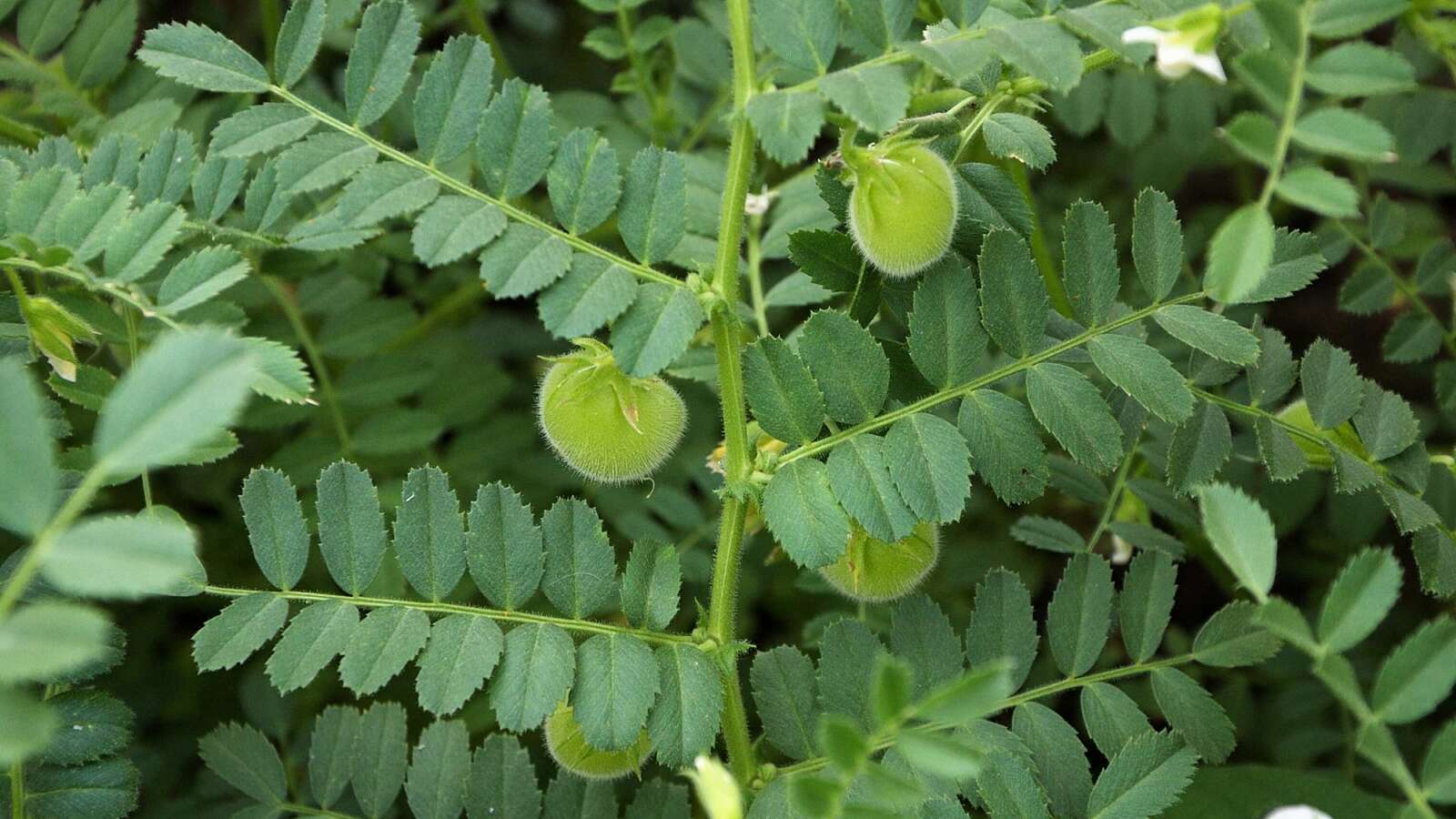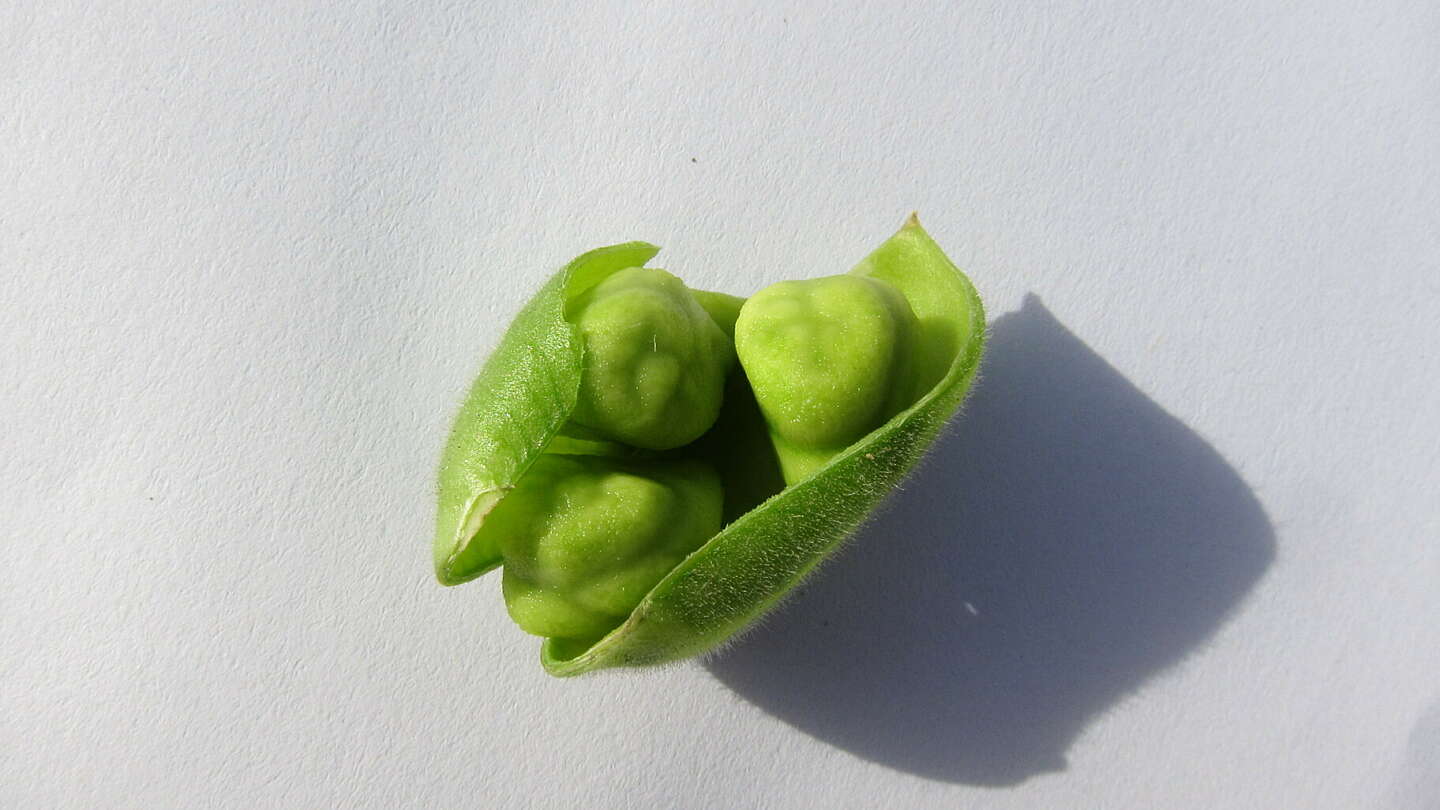
Chickpeas
| Growing calendar | |
|---|---|
| Sow indoors | Late February |
| Sow outdoors | March-June |
| Plant out | May/June |
| Harvest | 8 weeks after sowing |
Chickpeas (Cicer arietinum) are usually encountered as dried pulses, but are increasingly being grown for a for the fresh green peas which have a unique nutty flavour. (This is a more worthwhile use of space than growing them for a dried crop) They are especially useful for dry, poor stony soils in areas of low rainfall, with yields spread over a long cropping season.
Chickpeas are grown throughout the Mediterranean area, and warm regions of the world. They have been cultivated for about 4000 years, and come in dark-seeded or white seeded types. Any chickpea sold for food or sprouting seed can be used to produce a crop. Dark seeded varieties are said to have superior flavour but lighter crops.
Sowing and growing chickpeas
Grow your own chickpeas from seed by providing them with light, well-drained soil and sunny site. Avoid shade or heavy clay. If sowing outdoors, sow in rows (as for ordinary peas), spaces around 9cm/3in apart in a double row with45cm/18in between rows, or 10cm/4in apart in a bed.
Or broadcast over a patch, from late March through till midsummer. Germination is rapid. Seeds often need protections from birds or rodents. Chickpeas aren’t quite as hardy as garden peas, but are more cold-tolerant than French or runner beans. Established plants can take a light frost, new seedlings may be slightly more tender, so give protection on cold nights at first. Usually, you shouldn’t need to thin plants, and they are self-supporting.
You can also grow chickpea seeds indoors, and is much more reliable if you have a rodent problem. If you want an especially early crop, you can sow in modules from late February and allow them to reach 4-5 true leaves before hardening off and planting out as above (otherwise sow from March – May).
Harvest and storage
Pick green peas when you can feel them through the pods (about 10 weeks after sowing.) Wear gloves when harvesting, as the leaves give off an acidic secretion in sunny weather which can irritate the skin. Pods only hold one to two peas, but plants will crop little and often throughout the summer when picked regularly. Cold nights may result in blind pods, but new flowers should set seed once weather conditions improve.
Troubleshooting
Chickpeas don’t suffer from many pests, but they do catch many of the common pea root rots. Treat as a legume for rotation purposes - allow a minimum of three years between crops on the same land. In prolonged wet weather, chickpeas often suffer from mildew and Botrytis.
Saving seeds from chickpeas
While it’s theoretically possible to save your own seeds, we have always found mice and birds find the pods first. If you fancy trying, leave the pods on the plants as long as possible, hand pick and leave to dry out on trays lined with newspaper, somewhere cool, dry and rodent-free. Seeds will remain viable for around three years.

| Growing notes | |
|---|---|
| Difficulty | Easy |
| Germination time | 10-14 days |
| Average time to harvest | About 2 months |
| Equipment needed | Sunny site |
| Average plant size | 20-30cm tall and 10-15cm wide |
| Family group to grow with | Legumes |
| Key nutritional content | High in protein, iron, Vitamin C and fibre |
| Seed saving notes |